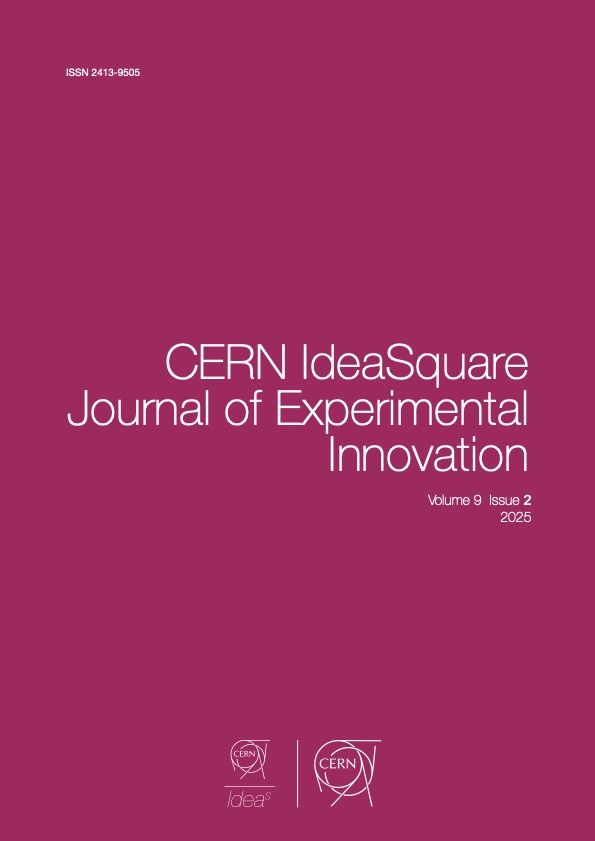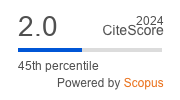Architecting the Hybrid Mind: The Dual Mandate of Experimental Innovation
DOI:
https://doi.org/10.23726/cij.2025.1786Keywords:
CIJ, IdeaSquare, innovation, hybrid mind, experimentAbstract
The articles in this issue suggest that the future of effective innovation does not lie in the dominance of algorithmic efficiency over human cognition, nor in rejecting automation. Instead, success depends on a "Hybrid Intelligence" model where formal innovation processes are rigorously applied to speed up execution and reduce risk, while simultaneously leveraging linguistic and contextual diversity to create the "cognitive friction" necessary for high-quality decision-making. Consequently, the challenge for leadership is to design organizations that are "ambidextrous"—capable of balancing the "closing behaviors" required for efficiency and execution with the "opening behaviors" needed for exploration and creativity. Together, these aspects provide a comprehensive perspective on the journey of an idea, from a simple spark of cognitive potential to a transformative force that reshapes our world, starting with the most fundamental element: the innovator's mind.
References
Allen, A. P., & Thomas, K. E. (2011). A Dual Process Account of Creative Thinking. Creativity Research Journal, 23(2), 109–118. https://doi.org/10.1080/10400419.2011.571183
Anonymous. (2025). The Quiet Erosion. CERN IdeaSquare Journal of Experimental Innovation, 2025; 9(2): 37-38. https://doi.org/10.23726/cij.2025.1776
Bogers, M., Foss, N. J., & Lyngsie, J. (2018). The “human side” of open innovation: The role of employee diversity in firm-level openness. Research Policy, 47(1), 218–231. https://doi.org/10.1016/j.respol.2017.10.012
Calvo, S., & Goekoop, J. (2025). The Effect of First and Second Language Use on Divergent Thinking in Problem Solving. CERN IdeaSquare Journal of Experimental Innovation, 2025; 9(2): 23-27. https://doi.org/10.23726/cij.2025.1752
Cocchi, N., Dosi, C., & Vignoli, M. (2024). Stage-Gate Hybridization Beyond Agile: Conceptual Review, Synthesis, and Research Agenda. IEEE Transactions on Engineering Management, 71, 6435–6453. https://doi.org/10.1109/TEM.2023.3282269
Dellermann, D., Ebel, P., Söllner, M., & Leimeister, J. M. (2019). Hybrid Intelligence. Business & Information Systems Engineering, 61(5), 637–643. https://doi.org/10.1007/s12599-019-00595-2
Jackson, N., Heikkinen, K.-P., & Haapasalo, H. (2025). Personalised creativity development through design thinking. CERN IdeaSquare Journal of Experimental Innovation, 2025; 9(2): 8-22. https://doi.org.10.23726/cij.2025.1711
Opdenakker, R., & Cuijpers, C. (2025). From Abstract to Artifact: Using LEGO® SERIOUS PLAY® as an Experimental Methodology in Design Science. CERN IdeaSquare Journal of Experimental Innovation, 2025; 9(2): 5-7. https://doi.org/10.23726/cij.2025.1746
Resio, F., Paolucci, E., & Marullo, C. (2025). What Drives the Effectiveness of Proof-of-Concept Projects? CERN IdeaSquare Journal of Experimental Innovation, 2025; 9(2): 28-36. https://doi.org/10.23726/cij.2025.1743
Velázquez, J. A., Segal, N. L., & Horwitz, B. N. (2015). Genetic and environmental influences on applied creativity: A reared-apart twin study. Personality and Individual Differences, 75, 141–146. https://doi.org/10.1016/j.paid.2014.11.014
Vignoli, M., & Wareham, J. (2024a). Expanding the Frontiers of Innovation. CERN IdeaSquare Journal of Experimental Innovation, 8(2), 1–3. https://doi.org/10.23726/cij.2024.1602
Vignoli, M., & Wareham, J. (2024b). Research in action to push the boundaries of scientific research and technological development. CERN IdeaSquare Journal of Experimental Innovation, 8(1), 1–4. https://doi.org/10.23726/cij.2024.1530
Xi, Y., Zhou, L., & Wang, H. (2025). Ambidextrous leadership and innovation: A process perspective and an experimental approach. Humanities and Social Sciences Communications, 12(1), 612. https://doi.org/10.1057/s41599-025-04922-9
Zacher, H., Robinson, A. J., & Rosing, K. (2016). Ambidextrous Leadership and Employees’ Self-Reported Innovative Performance: The Role of Exploration and Exploitation Behaviors. The Journal of Creative Behavior, 50(1), 24–46. https://doi.org/10.1002/jocb.66
Downloads
Published
How to Cite
License
Copyright (c) 2025 Matteo Vignoli, Jonathan Wareham

This work is licensed under a Creative Commons Attribution 4.0 International License.
Authors who publish with this journal agree to the following terms:
- Authors retain copyright and grant the journal right of first publication with the work simultaneously licensed under a Creative Commons Attribution License that allows others to share the work with an acknowledgement of the work's authorship and initial publication in this journal.
- Authors are able to enter into separate, additional contractual arrangements for the non-exclusive distribution of the journal's published version of the work (e.g., post it to an institutional repository or publish it in a book), with an acknowledgement of its initial publication in this journal.
- Authors are permitted and encouraged to post their work online (e.g., in institutional repositories or on their website) prior to and during the submission process, as it can lead to productive exchanges, as well as earlier and greater citation of published work (See The Effect of Open Access).


